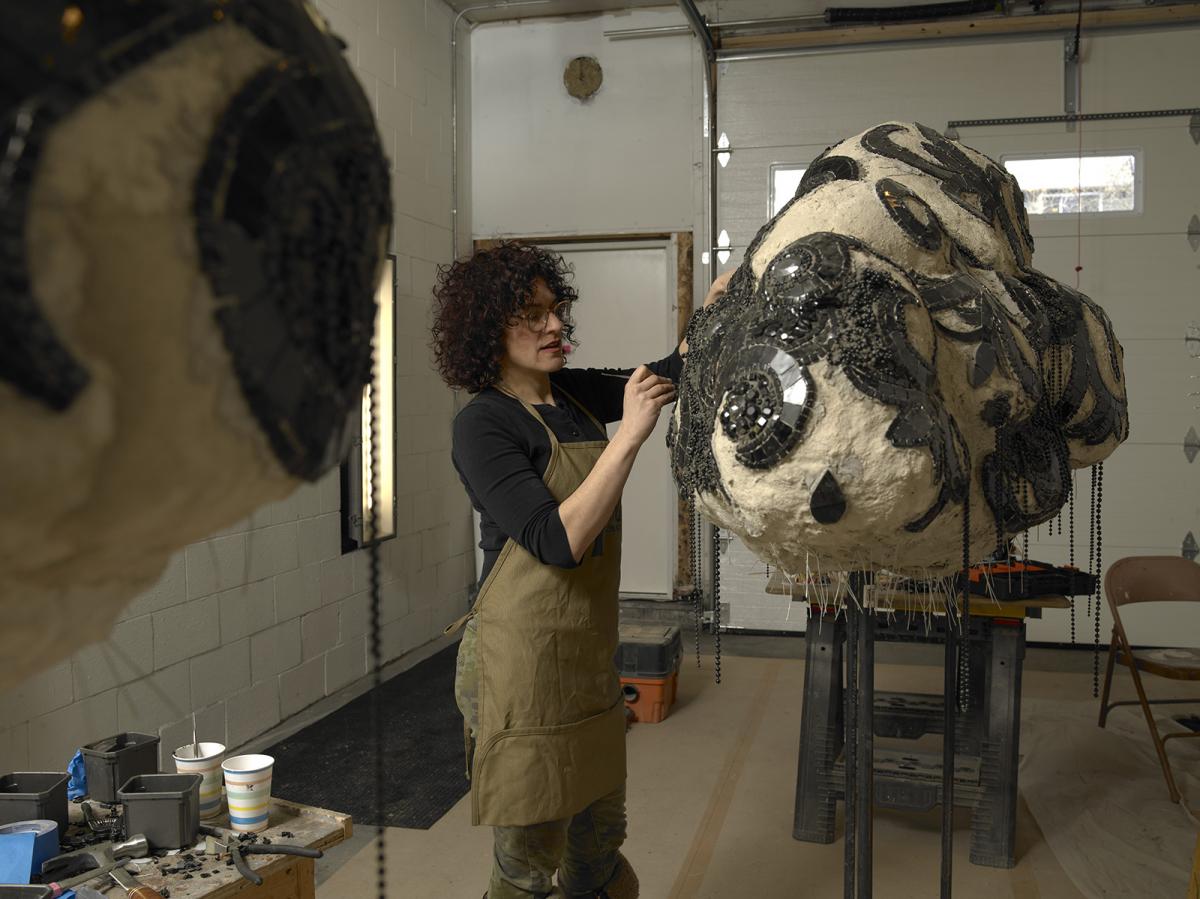Lauren Fensterstock (b. 1975, resides Portland, Maine) creates detailed, large-scale installations using labor-intensive modes of making drawn from the decorative arts, including paper quilling and mosaic. For this exhibition, SAAM has commissioned a site-specific work—the first in a new series for the artist inspired by sources like The Book of Miracles, a richly illustrated sixteenth-century German manuscript—that transforms an entire gallery at the Renwick into a celestial landscape and captures the power and awe inherent in natural phenomena.
Trained as a metalsmith, Lauren Fensterstock’s current practice places her in the role of unconventional landscape architect. While designing the garden at her home in Portland over a decade ago, Fensterstock began researching garden history and discovered the variety of ways humans have manipulated the natural world to express their own culture, views, and values. Fensterstock takes inspiration from historical moments, creating objects and installations that are labor-intensive and materially seductive. She uses techniques with long histories in the decorative arts, including paper cutting and quilling, mosaic, and shellwork.
Largely constructed in monochromatic black—a choice that speaks to her diverse influences, which range from twentieth-century minimalism to the Claude glass, a seventeenth-century drawing tool named for painter Claude Lorraine—Fensterstock’s landscapes express at once a void and the entire world, and invite us to take a closer look. Craft enables her to explore ecology—the study of relationships that form between organisms and their environment—in its truest sense.
On the Blog
Eye Level, March 3, 2021, “Lauren Fensterstock in Focus: Finding Inspiration in the End of the World”
Finding Inspiration in the End of the World
The newest addition to Fensterstock’s rich catalog of influences is The Book of Miracles, a sixteenth-century luxury manuscript. It belongs to a larger category of apocalyptic albums, a type of publication that became popular as more and more people began reading the Bible in the wake of the development of the printing press. The Book of Miracles details a wide range of events marked by extreme natural conditions, believed to be the result of divine intervention: the deluge that necessitated Noah’s ark, plagues of locusts, skies with multiple suns, stars falling from heaven, snow in summer. One image—a fiery comet appearing at the time of Muhammad’s birth over the city of Constantinople—serves as a key reference for The totality of time lusters the dusk.
The totality of time lusters the dusk
This site-specific installation, created for the 2020 Invitational, transforms the Renwick’s galleries into earthly and heavenly realms. Rain clouds and a comet, complete with streaming tail, hover over a richly detailed garden. Fensterstock encrusts the objects that make up this glittering, yet ominous, skyscape with a dazzling mosaic of obsidian, glass, and crystals. She harnesses these elements to refer to scrying, a practice that uses dark reflective surfaces to see visions of the future.
The totality of time lusters the dusk is Fensterstock’s first work to explore how weather and celestial activity have been used as metaphor, an especially potent idea in our current age of extreme weather and changing climate amid a devastating global pandemic. Although this new direction came before the appearance of the 2019 coronavirus, the foreboding and destabilizing beauty of Fensterstock’s work takes on additional meaning in a reality where the myth of certainty has been exposed as fallible.
Courtesy of Claire Oliver Gallery



































